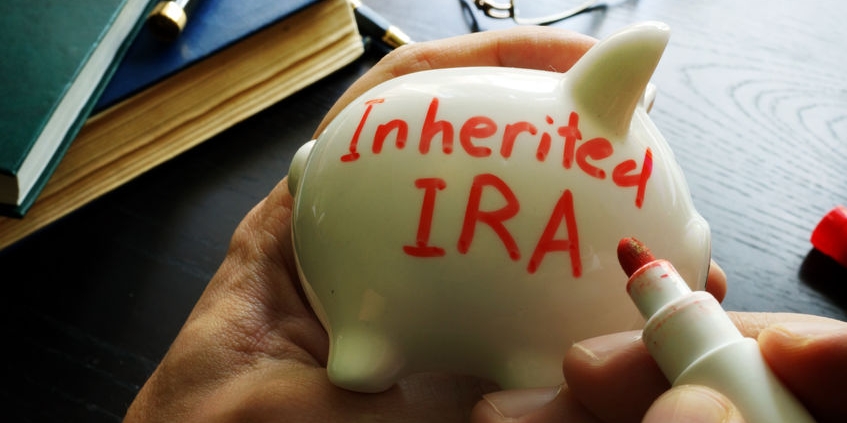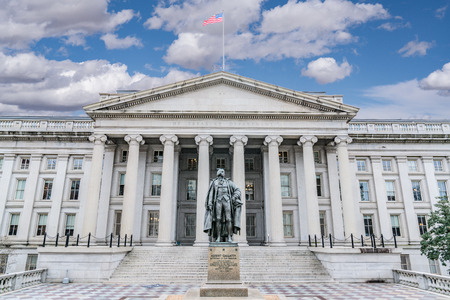This article was originally published on October 4 2019 by Globe and Mail Inc.
At your company, are you a jack of all trades or master of one? Shakespeare might put it like this: ‘To specialize or not to specialize, that is the question.’ Indeed, it’s a question often asked by business owners, managers and leaders.
Adam Smith, who is often regarded as the father of capitalism, wrote The Wealth of Nations where he described a pin factory with 10 employees who divide the work of making a pin into multiple steps, each person an expert at one step. Think of it as a precursor to the automaker’s assembly line. Using this model, Smith reasoned that pin production is greater than if each employee had performed all the steps in making the pin.
While that might work great for pins, what about something like professional services?
Large professional services firms tout themselves as “one-stop-shops.” At first glance, they appear to be generalists in such areas as audit, tax and advisory services. However, their services are broken down further into highly specialized practices led by experts in their respective functional areas.
For the customer, this can be the best of both worlds – all the expertise they need in one place and a collaborative “team” of people to deliver the goods.
The reality of this model is that experts are rarely the ones doing detailed work. They may serve as client contact or provide sign-off on the file, but the work is done by more junior staff who may be off-site or even offshore.
Such an approach would tend to follow the Adam Smith approach to greater productivity.
I’m familiar with the accounting industry. The Big Four firms employ a model encompassing many service lines for clients to choose from. Oftentimes, individual employees become specialized in one area, which can happen early in that person’s career, limiting exposure to other service lines.
This is great for achieving firm-wide efficiencies and developing experts in many areas, but where does it leave the employee in terms of skill development? Adam Smith identified this as well. He observed that individuals who do only one thing may be very good at it but lose the ability to grow and typically end up stagnating in their career.
In fact, most professional services practitioners want a broad scope. They don’t want to be stuck in the same silo their entire career.
Today professional service firms have specialization within the organization which means professionals are not exposed to multiple disciplines. In the world of tax, which is what I know, very rarely does a transaction or tax event happen in a vacuum. Thus, only by exposure to everything does the accounting professional get to test the waters and see what disciplines they enjoy.
Specializing too early in one’s career can be a liability. Imagine a doctor who skips right to neurosurgery and doesn’t get a foundational knowledge of the human body. The same logic can be applied to specializing in a certain area of taxation.
When the neurosurgeon graduates from medical school and starts a practice, do they incorporate or operate as a sole proprietor? A tax professional who focuses only on corporations would tend to advise to incorporate because that’s what they know. But it may not be the best advice.
If the neurosurgeon is a Canadian who went to medical school in the United States and decides to practice there, they need an accountant familiar with tax complexities south of the border. In my business, I often come across accounting professionals, as well as lawyers and financial advisers, who lack basic foundational skills because they never got this cross-section of experience. In other words, they worked in a silo.
My firm hires cross-border taxation experts, many of them from a Big Four environment who were frustrated with career-stifling silos.
Every business wants to reduce costs and gain market share over competitors. But how do you contribute to those factors and avoid becoming too specialized?
- Focus on the “big picture” for your career. First, do the foundational work in order to increase the efficiency, accuracy and overall value of specialized work.
- Think twice about being called ‘expert.’ It looks good on paper but being pigeonholed can be career-limiting. Explore areas that are unfamiliar but related, and work for people who prioritize career growth. Given the chance, you could be more valuable to your company in a different role.
- Bring your ideas and perspectives to the table and have a say in what you do. Being fully engaged in your job will always produce optimal results.
In today’s marketplace, the value of specialization doesn’t come from being laser-focused on one area. It comes from knowing many things that impact that area.
The Internal Revenue Service has begun sending letters to more than 10,000 cryptocurrency holders, warning they may have broken federal tax laws.
The agency wasn’t specific about the possible violations it was reviewing, but those who hold digital currencies could be subject to a variety of taxes, especially on capital gains.
“Taxpayers should take these letters very seriously. The IRS is expanding efforts involving virtual currency,” IRS Commissioner Chuck Rettig said.
The agency expects its mailing to be completed by the end of August. Three variations of the letter are being sent, depending on the information the IRS has about the recipient.
The IRS letters come as bitcoin, the world’s most popular cryptocurrency, has ridden a new wave of optimism in recent months. In mid-July, bitcoin topped $12,000, more than three times its value at the end of 2018. Investors, speculators and Facebook Inc. have extolled the potential of digital currencies.
At the same time, use by drug dealers and other nefarious actors has marred its reputation. The IRS has expressed worries about the ability of digital currencies to promote tax evasion.
An IRS spokesman declined to say how it learned about the targeted cryptocurrency holders and their transactions.
Do you think government should tax profits bitcoin trades? Join the conversation below.
One possible source is information provided to the agency by cryptocurrency exchange Coinbase. In mid-March of 2018, Coinbase provided data—under a federal-court order—on about 13,000 accounts as requested by the IRS.
Coinbase turned over data on customers who bought, sold, sent or received digital currency worth $20,000 or more between 2013 and 2015.
The data included the customer’s name, taxpayer identification number, birth date and address, plus account statements and the names of counterparties.
A representative for Coinbase declined to comment.
“In terms of the actual people who have crypto capital gains, most of them are not prepared because they have not been filing crypto taxes based on conversations with thousands of our users” said Chandan Lodha, chief executive and co-founder of CoinTracker, a digital-currency tax software company.
Mr. Lodha said that many cryptocurrency exchanges weren’t built to provide users with transaction histories. Without such histories, investors would have had to keep track of their transactions by hand.
“This is a problem that people should have been paying attention to for a long time,” he said.
The sternest version of the letter, released Friday, asks recipients who believe they have followed the law to sign a statement declaring, under penalty of perjury, that they are in compliance with tax laws.
It also says the recipient should understand the IRS may be in touch with them.
The two other versions of the letter are less threatening. The mildest warns that the recipient “may not know the requirements for reporting transactions involving virtual currency” and then details them.
Tax professionals warned that the letters shouldn’t be ignored.
They say it is usually far better, and less expensive in the end, to go to the IRS and attempt to rectify past mistakes. By sending the letters, the agency put people on notice that they are already in its sights.
Jimmy Song, a cryptocurrency investor who teaches a course on bitcoin at the University of Texas at Austin, said he heard rumblings about a potential crackdown on Twitter this week.
The new enforcement “doesn’t feel good,” Mr. Song said. “It seems like an intrusive way to get people to pay and I personally don’t like it because I’m a libertarian and many people who own this are.”
According to an IRS spokesman, there is no explicit requirement that many cryptocurrency sales be reported to the agency by third parties. Sales of stock shares must generally be reported on Form 1099-B to the IRS by the brokerage firm.
Among the possible taxes: If an investor sells a cryptocurrency after holding it longer than a year, the profits are typically long-term capital gains.
The tax rate is 0%, 15%, or 20%, plus a 3.8% surtax in some cases, depending on the owner’s total income.
an original WSJ documentary, markets reporter Steven Russolillo ventures Japan and Hong Kong explore universe His mission: create WSJCoin, virtual token for newspaper industry. Image: Crystal Tai. Video: Clément Bürge
In general, the IRS has until three years after a return’s due date to assess a deficiency, but that limit expands to six years if income is understated by more than 25%.
There are many exceptions, however. For example, the statute of limitations doesn’t start to run until a tax return is filed, and there is no time limit to bring civil fraud charges.
When it comes to preparing tax returns involving cryptocurrencies, Darren Neuschwander, a certified public accountant, said many tax preparers are frustrated because the IRS has long promised new guidance on cryptocurrencies that it hasn’t yet released.
“It’s ironic that the IRS is issuing these letters because we’re still waiting to know more rules,” he said.
Write to Laura Saunders at laura.saunders@wsj.com
Copyright ©2019 Dow Jones & Company, Inc. All Rights Reserved. 87990cbe856818d5eddac44c7b1cdeb8
Appeared in the July 27, 2019, print edition as ‘IRS Warns Holders of Digital Currencies.’
The Canada Revenue Agency (CRA) sent more than 700,000 records to the U.S. Internal Revenue Service (IRS) in 2017 as part of a tax-information sharing deal between the two countries, said a CRA official during a roundtable discussion at the annual national conference of the Canadian arm of the Society of Trust and Estate Practitioners (STEP Canada) in Toronto on Friday. The figure is current as of April 2019.
In 2014, the Canadian government signed an intergovernmental agreement (IGA) with the U.S. to exchange tax information on each other’s tax residents on an annual basis.
Under the IGA, which took effect in 2015, Canadian banks and other financial institutions report information on their American accountholders who have an aggregate balance of US$50,000 or more, excluding balances in some tax-sheltered accounts, to the CRA, which shares the data with the U.S. government.
In effect, the IGA implements the U.S. Foreign Account Tax Compliance Act (FATCA), a law passed in the U.S. in 2010 that compels global banks to report on their U.S. clients to the U.S. government. FATCA was designed to prevent offshore tax evasion by U.S. taxpayers.
So far, the U.S. government has not requested any further information in respect of the data sent by the CRA, said panellist Marina Panaourgias, an industry sector specialist in the trust section of the income tax ruling directorate of the CRA.
Terry Ritchie, director of cross border wealth services at Cardinal Point Capital Management in Toronto, suggests he isn’t surprised that the IRS has made no further inquiries about the exchanged data.
“Now that they have that information, what is the IRS likely to do with it? Probably nothing,” Ritchie says. “They have more problems in their own backyard that they should be more attentive to than to be chasing non-compliant U.S.-resident taxpayers in Canada.”
In recent years, global governments have made it an increasing priority to clamp down on offshore tax evasion.
For example, in 2017, Canadian financial institutions began identifying accounts belonging to individuals who are tax residents of foreign countries and reporting that information to the CRA under the Common Reporting Standard (CRS) regime, which was developed by the Organization for Economic Co-operation and Development. Canada began exchanging that information with foreign countries under the CRS the following year.
This article was originally published on June 7 2019 by The Advisor’s Edge (www.advisor.ca)
This article was originally published on June 7 2019 by The Lawyer’s Daily (www.thelawyersdaily.ca), part of LexisNexis Canada Inc.
Identity theft was an issue long before the Social Insurance Number (SIN) existed, but it keeps evolving. It is common today because high-tech hackers work around the clock to find new ways to access our personally identifiable information. This makes taxpayer data some of the most sought-after information for cybercriminals.
So what are the Internal Revenue Service (IRS) and the Canada Revenue Agency (CRA) doing to protect our sensitive information from being used to file a fraudulent tax return? A comparison between the two agencies shows a big gap when it comes to planning and strategizing ways to protect taxpayers from tax-related identity theft.
With a population as large as that of the United States, there are hundreds of millions of opportunities to steal a person’s identity. In fact, this has been a major concern of the IRS for some time. In 2015, in response to the surge in identity theft that came along with taxpayers’ increased use of online technologies, the IRS formed the Security Summit.
The IRS Security Summit is a public-private partnership made up of representatives from the IRS, state tax agencies, the larger tax community (i.e., tax-preparation firms, software developers, payroll and tax financial product processors, and tax professional organizations) and financial institutions. They work together to protect U.S. taxpayers from identity theft refund fraud. In 2017, the summit also established the Identity Theft Tax Refund Fraud Information Sharing and Analysis Center (IDTTRF-ISAC) to facilitate information exchange, provide a real-time forum for discussion and promote the use of data analysis, all with a view to detecting and preventing tax- related fraud.
This ambitious initiative has proven to be very successful. IRS statistics for 2015 to 2018 show that during this time frame:
- taxpayer reporting of identity theft fell by 71 per cent;
- confirmed identity theft returns intercepted by the IRS declined by 54 per cent;
- US$24 billion in fraudulent refunds were protected by the IRS stopping confirmed identity theft returns;
- an additional US$1.4 billion in fraudulent refunds was recovered by financial industry partners.
In contrast to the formal programs and awareness campaigns of the IRS, the CRA seems to be in the dark. Its so-called “strategy” to prevent tax-related identity theft puts the onus on Canadian taxpayers to be vigilant around such things as telephone scams and phishing expeditions. And its “awareness campaign” appears to be limited to four posters reminding taxpayers that we can protect ourselves; tax agencies and tax preparers are encouraged to put these posters on their office walls! There is no Canadian equivalent to the Security Summit and nothing like IDTTRF- ISAC. The Office of the Canadian Privacy Commissioner (OPC) is working to address data breaches that lead to identity theft by provisioning a mandatory requirement that organizations give proper notice to affected individuals and to the OPC when a data breach occurs. And that’s pretty well it.
But it seems the IRS has always outpaced the CRA in matters of data security. In 2014, some 900 SINs were stolen from the CRA due to the Heartbleed Internet bug, which was a serious vulnerability in an encryption software intended to secure web communications. The IRS was not impacted at all. Meanwhile, the CRA had shut down online services to prevent incidents such as the theft of SINs from happening. Yet the theft still occurred, while IRS online services continued unscathed for the duration of the notorious cyberthreat.
It’s high time that the CRA get in step with its American cousin.
According to an IRS press release issued on April 8, IRS commissioner Charles Rettig was happy to celebrate the wins of the summit, but was also quick to caution about sophisticated criminals. “Identity thieves are often members of sophisticated criminal syndicates, based here and abroad,” he said. “They have the resources, the technology and the skills to carry on this fight. The IRS and the Summit partners must continue to work together to protect taxpayers as cyberthieves continue to evolve and adjust their tactics.”
Tax lawyers and tax accountants should be aware that part of this ongoing cybercriminal evolution involves targeting tax professionals and their clients’ personal data. This remains a major issue for the IRS, as the agency has no control over third-party data security. If you are a tax professional and believe you have experienced a theft of your U.S. taxpayer client data, contact the IRS stakeholder liaison for assistance.
And what if you are a tax professional in Canada with concerns about data breaches on this side of the border? Well, I know I’m suddenly longing for the days when data security came in the form of a paper shredder.
This article was originally published on May 31 2019 by The Lawyer’s Daily (www.thelawyersdaily.ca), part of LexisNexis Canada Inc.
The Internal Revenue Service (IRS) in the U.S. is bringing its IT systems into the 21st century, which is good news for American taxpayers and Canadians who must file U.S. returns. It is also good news for tax lawyers and tax accountants.
The IRS Integrated Modernization Business Plan is a 45-page, six-year plan laid out in detail with initiatives categorized under four pillars:
- Taxpayer Experience
- Core Taxpayer Services & Enforcement
- Modernized IRS Operations
- Cybersecurity & Data Protection
The first pillar focuses on modernizing the taxpayer experience. The goal is to make interacting with the IRS and with personal tax information as easy as online banking. Some of the perks highlighted in the report include simplified online interfaces, better access to information and self-service options, and improved customer service through callback technology, online notices and live online customer support, all while protecting taxpayer information and data.
The second pillar, Core Taxpayer Services & Enforcement, involves programs and initiatives that aim to retire outdated systems and consolidate disparate systems and data into updated solutions. For example, 60 different case management systems will be decommissioned and replaced with a single, consolidated, enterprise-wide platform. The IRS says the new system will be an “end-to-end view of taxpayer cases and interactions.”
Phase two also introduces real-time tax processing, which is described as “near real-time data processing” that will allow taxpayers to easily adjust their return online after they file. As Canadian taxpayers, we are painfully aware that the CRA’s online system is currently not close to “near real-time” and plans to make improvements are high-level at this time.
The third pillar, Modernized IRS Operations, aims to simplify infrastructure and implement new technologies such as data analytics and automation in order to create efficiencies. The IRS modernization plan anticipates that the initial investment in emerging high-tech solutions will result in significant long-term savings for the agency through improved processes and optimized systems.
The last pillar, Cybersecurity & Data Protection, has three main initiatives: 1) Identity & Access Management, 2) Security Operations & Management, and 3) Vulnerability & Threat Management. With this one the IRS will try to better protect taxpayer data from the persistent risk of cyber threats. Incredibly, the report says the agency faces 1.4 billion attacks every year.
Why did the IRS need this integrated modernization business plan? The agency recognized that it has been experiencing its own financial struggles for decades with trillions of dollars lost to tax evasion and a tax gap of over US$450 billion (which represents the difference between taxes owed and taxes paid on time). Intensifying these shortfalls is the fact that 45 per cent to 55 percent of the IRS workforce is on the verge of retiring.
On April 10, IRS commissioner Charles Rettig announced to the Senate Committee on Finance that the agency requires US$2.3 billion to US$2.7 billion over a six-year period to implement an IT modernization plan that would include revamping its IT systems. Why? U.S. Senate Finance Committee chair Charles Grassley called the agency’s IT systems and infrastructure “woefully outdated,” and expressed concern that past efforts and investments to update its technology may not have been money well spent.
In 2018, the IRS processed almost 141 million tax returns and any agency with a volume like that needs the latest IT technology. The IRS has already been under the strain of updating disparate systems for the 2017 Tax Reform Act, not to mention the five-week government shutdown earlier this year.
Modernization is key for several reasons: to 1) improve the agency’s ability to recoup monies owed; 2) prevent further losses due to tax evasion and fraud; 3) create much-needed efficiencies and 4) ensure ongoing compliance with tax laws for taxpayers.
Since almost 90 per cent of U.S. taxpayers file their returns online these days, nobody at the IRS wants more outages on deadline day, which they refer to as Tax Day.
On April 17, 2018, the IRS announced that its systems were experiencing technical difficulties (i.e., they crashed) due to transmissions from software providers to the agency’s tax-processing systems. Those systems were more than 60 years old. And guess what? The IRS system crashed again this year on the last Tax Day. A similar outage occurred in March on the CRA website when online services were down for a day.
I wouldn’t say that exciting times are ahead for taxpayers and their representatives, but these real and sustainable improvements to services, operations and security for the IRS are most welcome. From the perspective of a tax practitioner, the planned consolidation of various data sources for greater risk management, tax compliance, tax enforcement and information sharing have me (almost) looking forward to next year’s tax season. Or maybe the tax season six years from now.
What is Subpart F Income?
Generally, the taxation of earnings and profits in the U.S. of a controlled foreign corporation (“CFC”) are deferred until repatriation through the distribution of dividends. A CFC is a foreign corporation that is owned more than 50 per cent of vote or value by a U.S. person or persons (i.e. U.S. citizens, resident individuals, U.S. partnerships and corporations, non-foreign estates and U.S. trusts) who each own at least 10 per cent of vote or value. However, there are exceptions to the deferral with respect to passive and certain types of active business and personal services income. These types of income, under specific circumstances, are taxable in the hands of the U.S. person whether or not distributed to the shareholder. The deemed income inclusion is what is referred to as “Subpart F” income. The Subpart F rules are anti-deferral provisions to prevent U.S. persons from delaying the recognition of taxable income through the use of foreign entities.
What are the changes?
Beginning in 2018, a US citizen resident in Canada, who is required to accrue passive income (or other subpart F income) on his US personal tax return under the subpart F provisions of the CFC rules, will exclude the income from his US tax return if a Canadian corporate tax of over 18.9 per cent is paid on the income. This is what is commonly referred to as the “high-tax exception”. In Ontario, investment income is taxed at 50.17 per cent to the CFC (including capital gains taxed at 25.09 per cent), therefore, the high-tax exception would apply to exclude the investment income from being taxed currently as subpart F income. The current provisions ignore any subsequent reduction to the corporate tax as a refundable dividend tax on hand (“RDTOH”) once the income is distributed to the shareholder as a dividend for purposes of the high-tax exception.
Why were the changes enacted?
Treasury is aware that certain jurisdictions use a tax integration system where the corporate income tax paid by the CFC is refunded when the income is distributed, even if the shareholder is subject to little or no tax on receipt. This has raised concerns where CFCs are formed specifically to exempt passive income (or other subpart F income) from US taxation under the high-tax exception. To address this perceived abuse, proposed regulations were released on November 28, 2018 that modify the high-tax exception. Now, if foreign taxes paid or accrued are reasonably certain to be refunded to the shareholder on a subsequent distribution, such foreign taxes are not treated as paid or accrued for purposes of the high-tax exception.
What about capital gains?
As previously noted, Ontario’s tax rate on investment income is 50.17 per cent. After the RDTOH, the tax is reduced to 19.5 per cent on a subsequent distribution and the high-tax exception should apply. However, the high-tax exception with respect to capital gains will not be available due to a reduced tax rate of 9.75 per cent after the credit for the RDTOH. There may be situations where accumulated RDTOH can reduce the effective tax rate to below 18.9per cent. In this case, the high tax exception will not apply.
The regulations are still in proposed form and may change after the IRS receives comments from the public. If enacted in its original or revised form, it will be effective for tax years ending after December 4, 2018.










